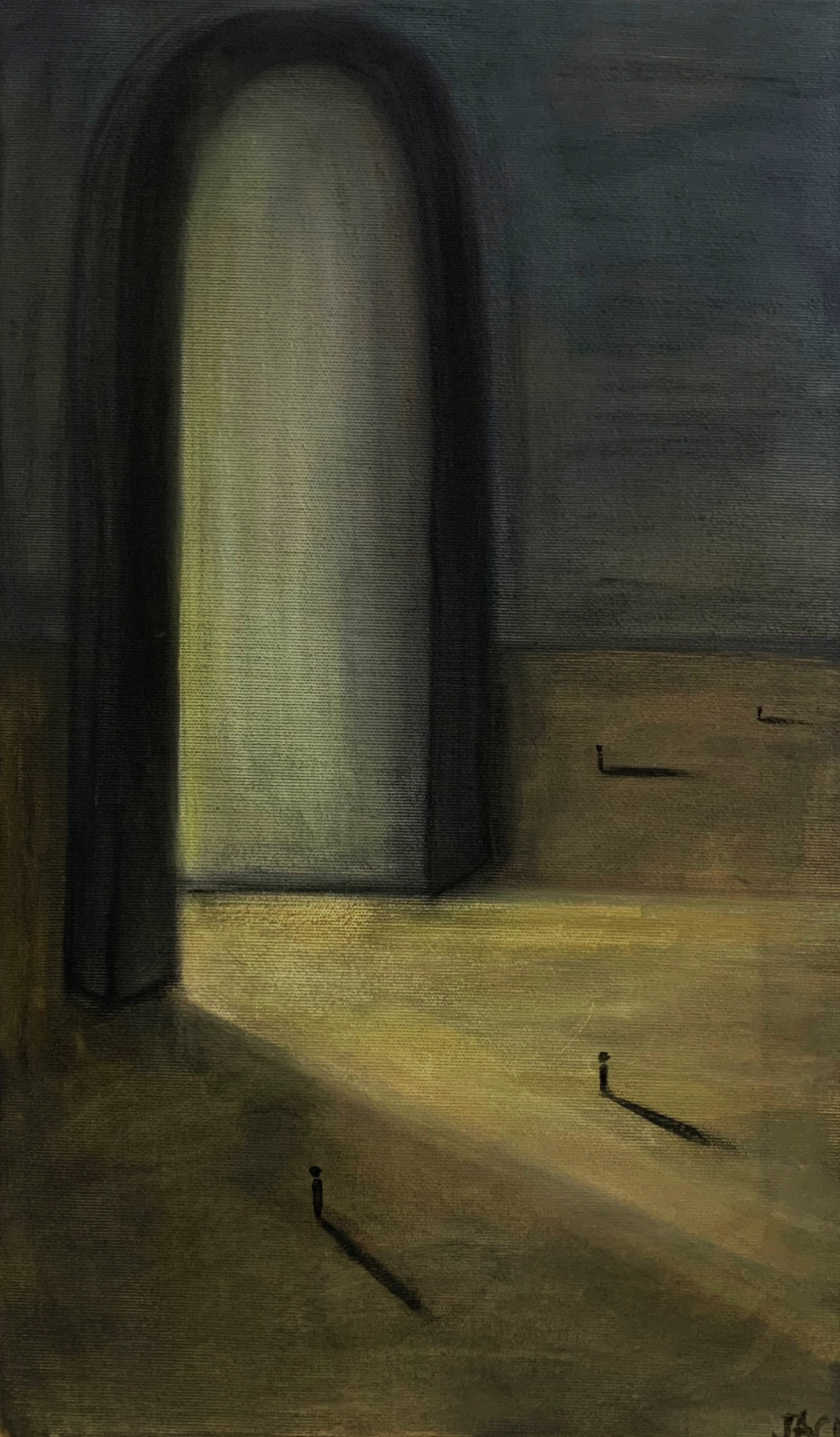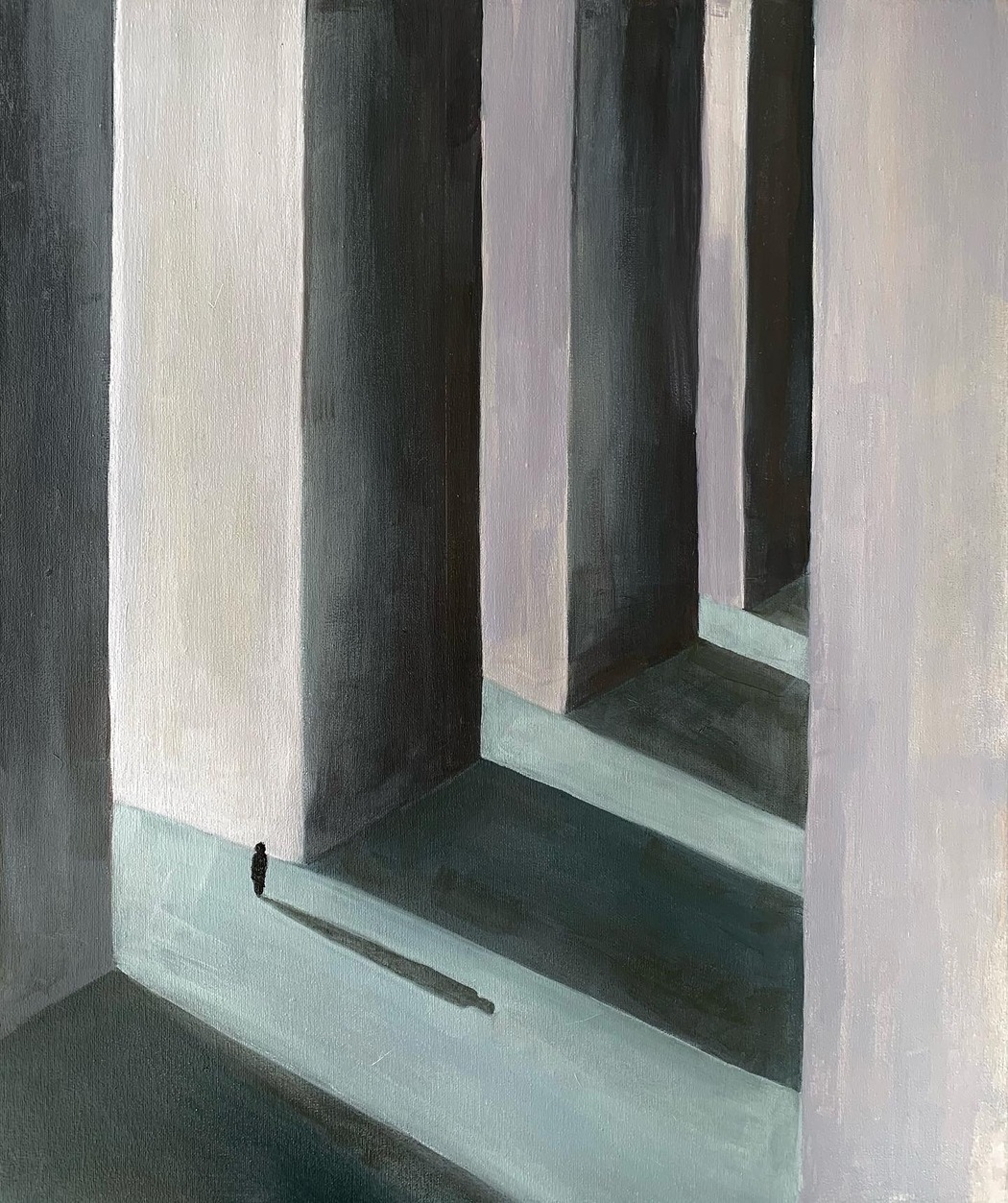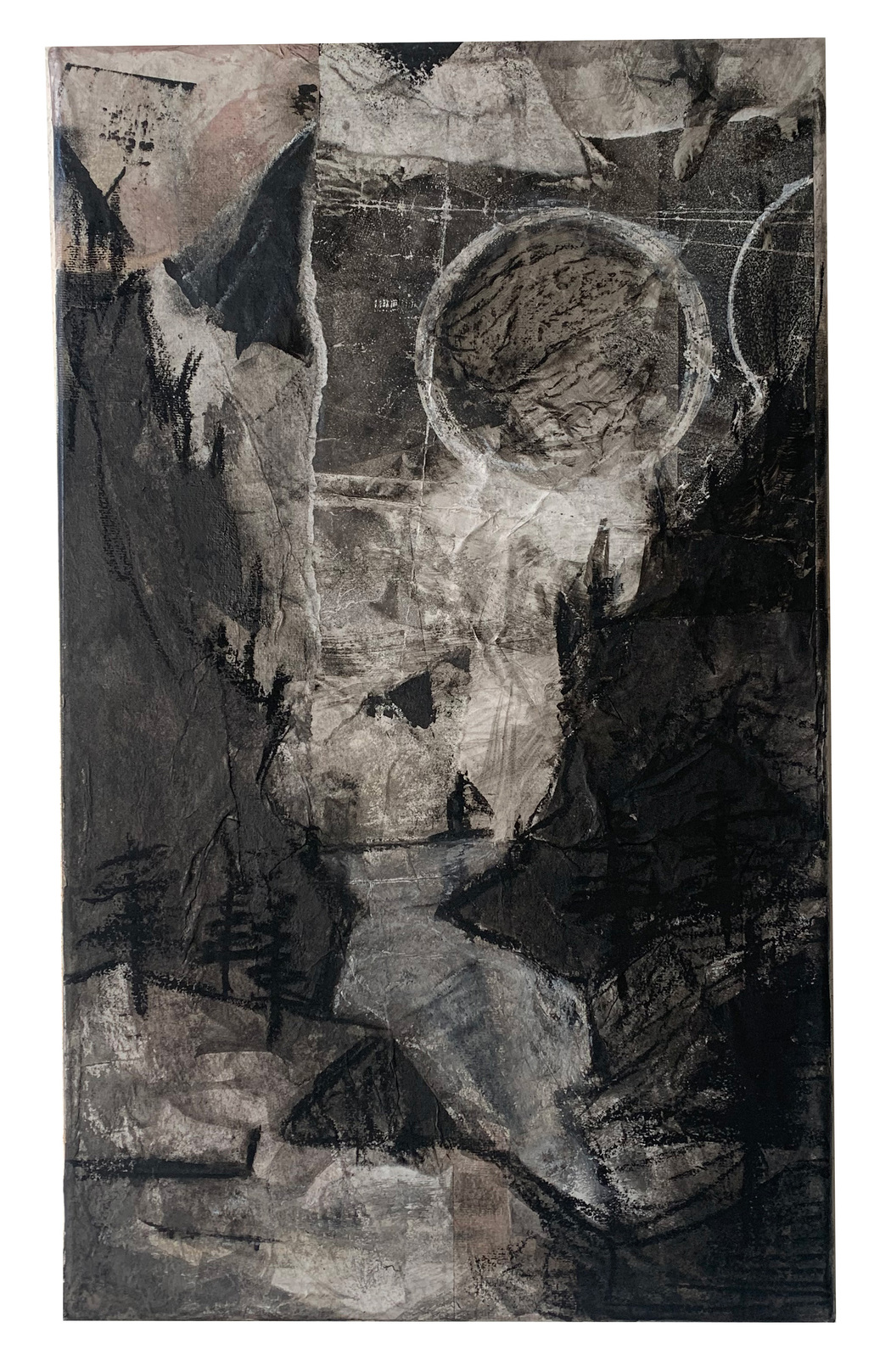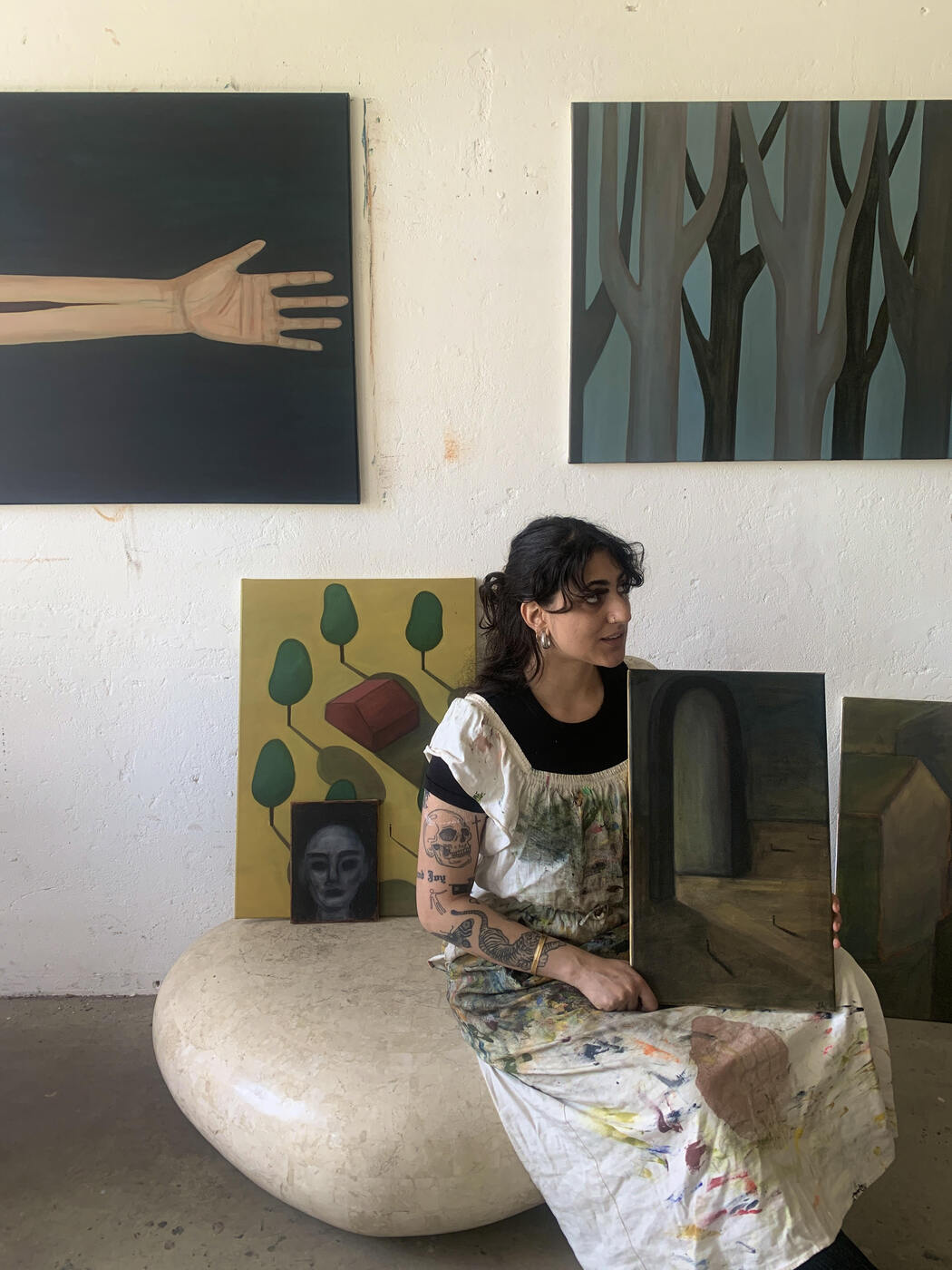Jace Ambwani
Year of birth: 2000.
Where do you live: Berlin, Germany.
Your education: BSc. Architecture, Tulane School of Architecture, New Orleans, LA.
Describe your art in three words: Familiar, Distant, Still.
Your discipline: I am a visual artist focused on mixed-media painting and drawing.
Instagram
To begin with, how did your return to art during the pandemic reshape your understanding of creativity and its place in your life?
Before studying architecture, I was studying business and foreign languages. I love learning languages, but I felt profoundly disconnected from myself in my business lectures. I was in my second year of undergraduate when the pandemic hit. I had just switched my degree program to Architecture, so I was taking some design classes and some art courses as well. I felt like, for the first time, I was doing something that felt right. In the past, I was always jumping from career idea to career idea, trying to find something that would satisfy my preconceived notions of success while still being something I felt ‘passionate’ about. But I didn’t know passion until I started taking art and design seriously.
I am in a privileged position to be able to say that the pandemic sparked a sort of personal renaissance in my life. It forced me to take time into my own hands and to be alone with my thoughts and my boredom. I am fortunate enough to have been in a comfortable space with a loving family during the pandemic, and I had a lot of personal freedom. I spent the whole lockdown period on my porch, which I set up as a makeshift studio space, experimenting with painting, printmaking, collaging, drawing, and all sorts of mediums and techniques. I felt like I was reconnecting with a critical part of me that had been dormant for many years. I didn’t realize how much I needed to create, for my own spiritual and mental well-being, until I started again.
How does your architectural background influence the way you compose space and light in your paintings?
When I think about the parts of my architectural background that play the biggest roles in the way I paint, I think of depth, scale, and perspective. In my process, scale plays the biggest role in composing space and light; it is a useful tool that I enjoy exploring. I am very fascinated by the power that scale has and how quickly it can change the mood and dynamics of a scene. I integrate that into my work when, for example, I exaggerate the size of a shadow relative to a figure to evoke isolation or shrink a horizon line to create tension. My fascination with scale stems from its power to manipulate spatial perception. Light follows this same rule of scale—I treat it as both structural and emotional material. Just as architects carve light with apertures and reflections, I layer rough shading or sharp contrasts to ‘construct’ atmosphere. The result is a painting that doesn’t just depict space, but invites the viewer to step into it, to feel the intensity of the world I’ve depicted.
 Jace Ambwani | Experimental Light and Shadow | 2024
Jace Ambwani | Experimental Light and Shadow | 2024
Your works often depict solitary figures or sparse, monumental environments. What emotional or philosophical states do these evoke for you?
I guess I would describe it as an uncanny solitude. A sense of comfort that, at the same time, is foreboding. Purgatory. Overwhelming isolation. I want my work to capture an overall sense of deep, personal uncertainty; uncertainty about who I am, what the world around me is, where I am, and who I want to be. Uncertainty about what lies ahead for my future and beyond death, the laws of the universe. The sparse, monumental environments are the spatial manifestation of uncertainty: I would describe it as a purgatory, like being on a fully set stage before the audience floods in and the spotlight turns on.
Can you talk about the relationship between anonymity and familiarity in your work? How do you explore this tension visually?
I approach the relationship between anonymity and familiarity as an exploration of the uncanny valley for built environments. The familiar, low-polygon environments (a house, a skyscraper, a ranch) are paired with this anonymous figure. The audience correctly assumes what those massings are and what this figure is supposed to be. They are familiar and recognizable as spaces we’ve seen before. They are nowhere to be found; however, they don’t exist in reality, but they are represented everywhere. It is abstracting an existing condition to reveal its fundamental parts. Sort of like a 3D model before applying materials to it. It makes me think about how we store memories and associations. The images of memories in my head are fuzzy and hazy, yet recognizable. If I picture ‘sprawling suburbia’ in my head, I don’t picture a specific neighborhood in, say, Arkansas, but a mix of similar architectural features that I’ve seen before. I hope my work may trigger a hazy memory from the viewers’ childhood and bring them a sense of comfort or unease.
 Jace Ambwani | Human City | 2023
Jace Ambwani | Human City | 2023
Several of your paintings convey a strong sense of isolation within urban or suburban settings. Is this a reflection of your own experience, or more of a cultural commentary?
It is both a personal and a cultural reflection. My work draws from my own experience in the American urban landscape and the role it plays in the American psyche. North America has a breathtaking and diverse natural landscape that is painfully juxtaposed with an urban design that wastes space and restricts the development of community or collective movement. It is intentional and has led us to become distant from one another while chasing individuality. Labyrinths of overpasses and highways, like in Los Angeles or Houston, the dense and imposing concrete jungle of New York, desolate rural environments in the south, and so-called ‘fly-over states’. Each of these conditions evolved from Manifest Destiny urban design and exists at the same time and space.
Under the guise of individualism, the built landscape reveals the true conditions of our society: the house you live in is identical to the acres of homes around you, only accessible with an automobile. You sit in the same traffic jam during your commute, surrounded by other people also alone in their cars. For the U.S., there is a fine line between embracing individualism and falling into isolation, and our urban design contributes to our slow descent into a society of lonely and extremist individuals.
 Jace Ambwani | Hossams Cove | 2025
Jace Ambwani | Hossams Cove | 2025
The human figure in your work is often reduced to a simple silhouette. What role does this abstraction play in how you express identity or universality?
The figure is the individual around whom the modern built environment is centered. It is me, or my neighbor, or it can be you. It is anonymous in depiction, but it represents everyone. The figure’s initial function is to give the viewer a sense of scale and, in turn, an emotional reaction.
What significance does shadow hold in your visual language? It seems to almost become a character in its own right.
The shadow represents the passage of time, as well as another layer of scale. I typically choose to represent times of the day that are the most still and quiet, where you are most likely to find yourself alone if you walk outside. Dawn and dusk are sort of purgatories between night and day. It’s when the shadows are the most dramatic, and they stretch into infinity as another set of hours begins or comes to an end. The hours between night and day are lost time, perhaps the loneliest hours we experience regularly, and often they feel existential. If you’re conscious during these hours, you may find yourself reflecting or, if you’re like me, overthinking. The light and shadows contribute to the sense of overwhelm and existentialism that I aim to induce in my paintings and help form the context of the work itself.


Leave a Reply